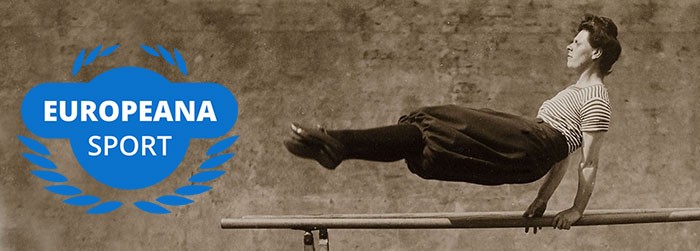World's largest multiple day marching event
In the 20th century, the International Four Days Marches ('de Vierdaagse') - the largest multiple day marching event in the world - became a regular sport event in the Dutch city Nijmegen. Usually held in the third week of July, the Four Days Marches are cancelled this year for the second time in a row due to the COVID-19 pandemic.
In this blog, Ernest Verhees from the Regional Archive of Nijmegen gives an insight into the Four Days Marches and the history of walking as a sport, through the Archive’s photographs and information about participants.
Origin and growth
The origin of the Four Days Marches Nijmegen lies in sporting events for army units held all over the Netherlands between 1904 and 1908. The goal of these events was to improve the physical condition of conscripted soldiers. In 1909, the Dutch Association of Physical Education (now the KNBLO) began organising four days of marching, which started from as many as ten different places in the Netherlands. That first year 306 people marched, most of whom were soldiers.
From 1910, the Vierdaagse became an annual event, based in a different town each year. Mobilisation during World War I meant that no marches took place in 1914 and 1915. In 1919, the first woman completed the route. The 1928 Four Days Marches was the first to have international participants. Germans, British, Norwegians and French nationals marched alongside the Dutch.
In 1937, over four thousand people participated in the event. The Four Days Marches were slowly changing from a long distance march organised by soldiers for soldiers into a walking event organised by a civil organisation (in which soldiers also took part).
After World War II, the number of participants continued to rise. By 1960, there were approximately 15,000 walkers. Since then, the number of people has increased by 10,000 each decade; participation has now peaked at 45,000.
Nijmegen
The event had an overnight stop in Nijmegen for the first time in 1912. Thanks to the hospitality shown in the Prins Hendrik barracks, the marching event started to visit the city regularly. In 1925, the Four Days Marches settled in Nijmegen.
Around 1930, the international interest in the event became obvious throughout the country and other cities applied to host. However, Nijmegen had proven its hospitality and the unique and varied walking routes in the area meant the Four Days Marches remained there.
The walkers from all over the world are accommodated in schools, public buildings and peoples’ homes. Nijmegen is now pre-eminently the Four Days Marches city.
Organisation
The organisation behind the Four Days Marches has been located in Nijmegen since 1998.
The Dutch Association of Physical Education (NBvLO) was founded in The Hague in 1908 by military officers who wanted to promote physical education to people from all layers of society. Their main concern was the resilience or defence of the country through a healthy population, especially strong and fit men.
Their ambition to become the most important sport organisations of the Netherlands didn't succeed. From the 1920s, the NBvLO only organised walking marches and became one of the nationwide walking associations. With the 50th anniversary in 1958, it received the predicate 'royal'. A long process of mergers of different national walking associations ended in 2015 with the founding of the Royal Walking Association of the Netherlands (KWBN).
Archives, pictures and participants
In 2012, the Regional Archive of Nijmegen received a large supplement to the archive of the KNBvLO it had already possessed for thirty years. Two parts of these archives deserve special attention: a collection of photographs and the registration lists of the participants.
More than 2,000 photos of the Vierdaagse in Nijmegen can be found in Europeana, available under a public domain license. Most are dated before 1940 and not only give a view of the walkers but also of the people and surroundings of Nijmegen and of the changes in support, transport and festivities during the 20th century.
The most important files in the archive of the organisers KNBvLO are records with the participants’ registration. In response to the 100th Vierdaagse in 2016, there were many extra activities about the history of the event. For the Regional Archive of Nijmegen, this was a good reason to digitise the administration of the participants from 1921 until 1987.
Besides digitising and presenting the registers and lists online, the archive started a project to make these lists more searchable. Using the crowdsourcing platform ‘Vele handen’ (many hands), it was possible to complete this project in six months with the help of volunteers from all over the Netherlands.
From that moment on, on the website www.regionaalarchiefnijmegen.nl, you can find the names and data of participants until 1939. Because of privacy regulations, the names from 1946 until 1987 can only be searched on location or by request.
Share your sport story
Can you help us to tell the story of sport in Europe in the past and the present?
We invite you to tell us about your sport experiences through objects like photographs, memorabilia, equipment or prizes.

